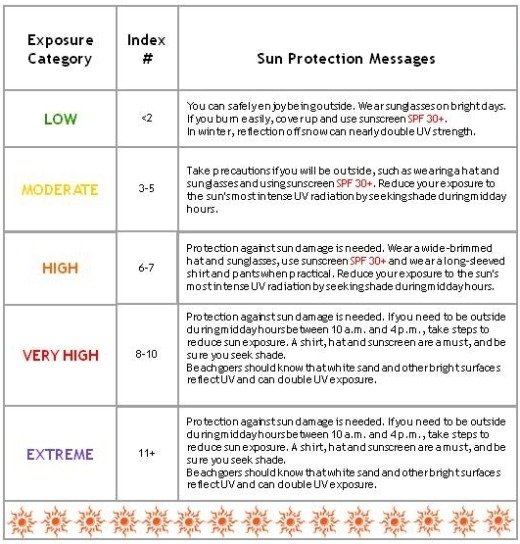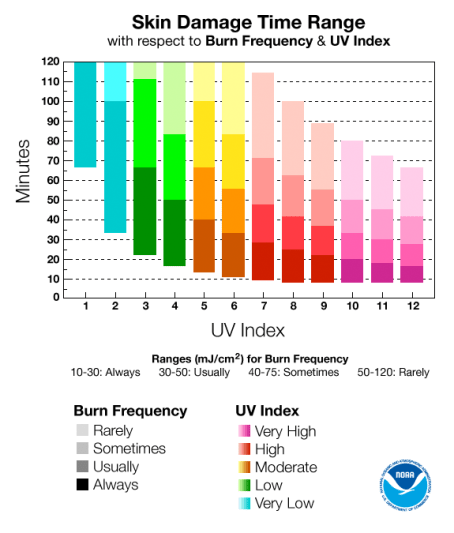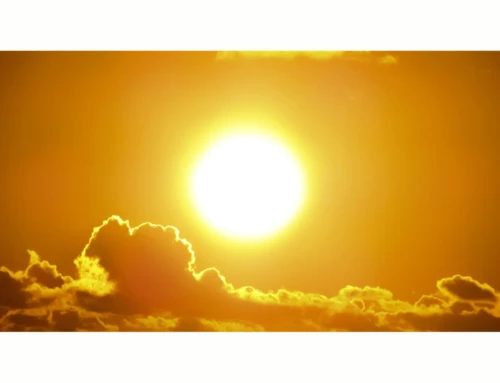The UV Index provides a daily forecast of the expected risk of overexposure to the sun. The Index predicts UV intensity levels on a scale of 0 to 10+, where 0 indicates a minimal risk of overexposure and 10+ means a very high risk. Scroll down to see how long you can be exposed to the various UV levels before you burn, together with the recommended sun cream factor you should apply.
The amount of UV radiation we are exposed to is mainly due to the height of the sun in the sky, the amount of ozone in the stratosphere, and the amounts of cloud cover. Heavy cloud can greatly reduce ultraviolet radiation levels and, this is not always realised, certain types of thin cloud can actually magnify the ultraviolet radiation strength.
The peak daily ultraviolet radiation level changes over the year. The strongest being at the Summer solstice (21st June) and the weakest at the Winter solstice (21st December). The UV Index can range from 0 (at night) to 11 or 12. The UV Index does not exceed 8 in the UK (8 is rare; 7 may occur on exceptional days, mostly in the two weeks around the summer solstice). However, indices of 9 and 10 are common in the Mediterranean area.
We have been measuring the UV index on the Crondall site since 30th December 2020 and the latest daily, monthly and seasonal UV statistics can be seen here and the latest UV status, as well as skin burning time, is here:

The latest UV index forecast for London for the next 7 days is as follows:

and here’s an overview for Europe
and similarly a UV map for the World
The UV Index is a forecast of the probable intensity of skin damaging ultraviolet radiation reaching the surface during the solar noon hour (11:30-12:30). The greater the UV Index is, the greater the amount of skin damaging UV radiation. How much UV radiation is needed to actually damage one’s skin is dependent on several factors.
In general, the darker your skin is — that is, the more melanin you have in your skin — the longer (or the more UV radiation) it takes to cause erythema (skin reddening).
If you enjoyed reading this, the please explore our other articles below:







